Clock Loop-End Mainspring Measuring
Clock Loop-End Mainspring Measuring
Measure Loop end mainsprings by width, thickness, and length. These are not always easy measurements to get, and the mainspring would need to be taken out from the clock.
It can be a frustrating puzzle to do, and a dangerous one also. But if learning clock repair or have time on the hands so to speak, here are some guidelines.
Caution !!
Always wear gloves and safety glasses when working with mainsprings. They can cut or punch the person working on the clock so please treat them with respect. It is not uncommon for the mainspring to break or shatter while working with them.
Just treat them with caution and respect while protect the hands and eyes. Be aware if a mainspring is wound up or when you stretch it way out to measure it, it has a lot of snapping power. These things can hurt when they smack the hand or fingers, or eye.
Getting the thickness and width
The items you need for this measurement are a tape measurer and a digital caliper, these are the best things to use. To get the width of the mainspring is easy, just use the digital caliper in inches and see how wide it is first.
Look on the chart below for the width column. Next is the thickness, again using the digital caliper in inch or mm. Write these two measurements down and again refer to the chart and narrow down the section even more. Now have a narrow section of the chart of sizes working with and only need the length.
Measuring the loop-end mainspring length
The length is the hardest to get the measurement on. What we do here is put the end of the spring in a vise and stretch it out. We pull the spring straight with a tape measure beside it as we unwind it.
Of course the tension of the spring is such it wants to wind back up in a violent manner.
When the spring is let go it winds back up with a snap. If there is a cat sitting by the vise and let go, the cat may not like you anymore. The length is the hardest to get but close enough is ok.
The length has not much to do with the function of the clock, only the time in which the clock will run. For example if the mainspring substantially shorter, it may not run the full 8 days.
Alternate way of measuring the length
It is possible to make the mainspring straight by just putting bends into the spring to uncoil it. Start from the end and every 6 inches put a bend with pliers in the opposite direction of the coil to make it straight.
The mainspring will eventually all be straight and then you can measure the length.
The most common size loop end mainspring for antique 1900s through 1945 American units is CML304. This size was sort of the industry standard when Seth Thomas, New Haven, Gilbert, Sessions was in full swing with the 8 day time strike units in mass production.
↑ Back to top

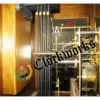
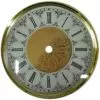
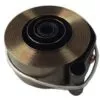
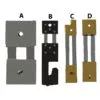
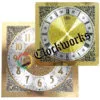











I have a 1933 Norland Westminster Chime mantel clock. Is it possible to find out the mainspring size online?
No, it will have to be measured. Or you can just send the clock movement alone to us for service
James Stoudenmire
40yr Clockmaker
Author of Clockworks.com
Do I have to clean and then re-lubricate a new mainspring before installation?
Its best practice to clean and lube new springs. That way you know they are done properly and what the lube is. imo
Mainsprings usually do not get cleaned but some light grease may help. We are out of the grease at this time
James Stoudenmire
30yr Clockmaker
Author of Clockworks.com
No, it comes clean and lubed
James